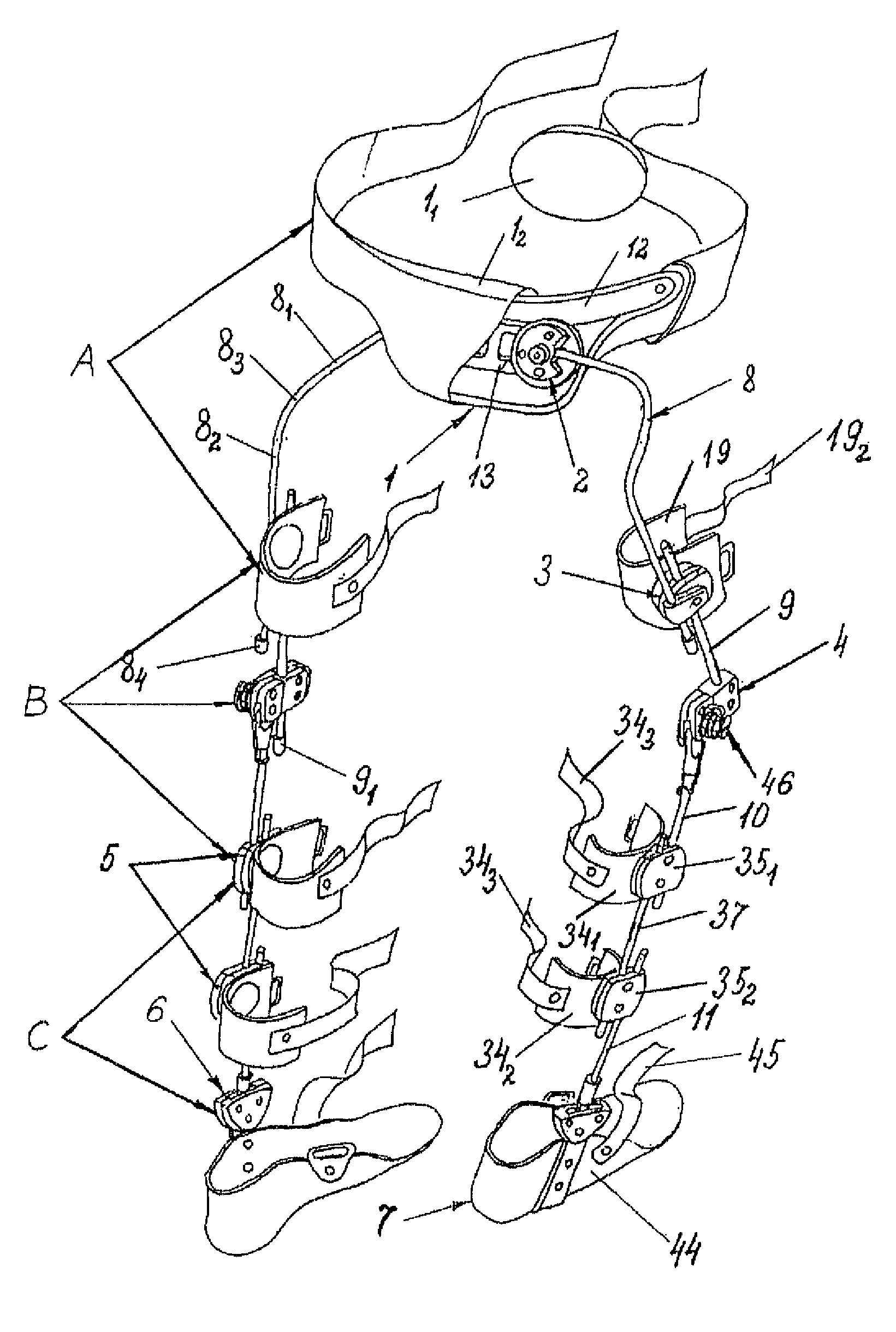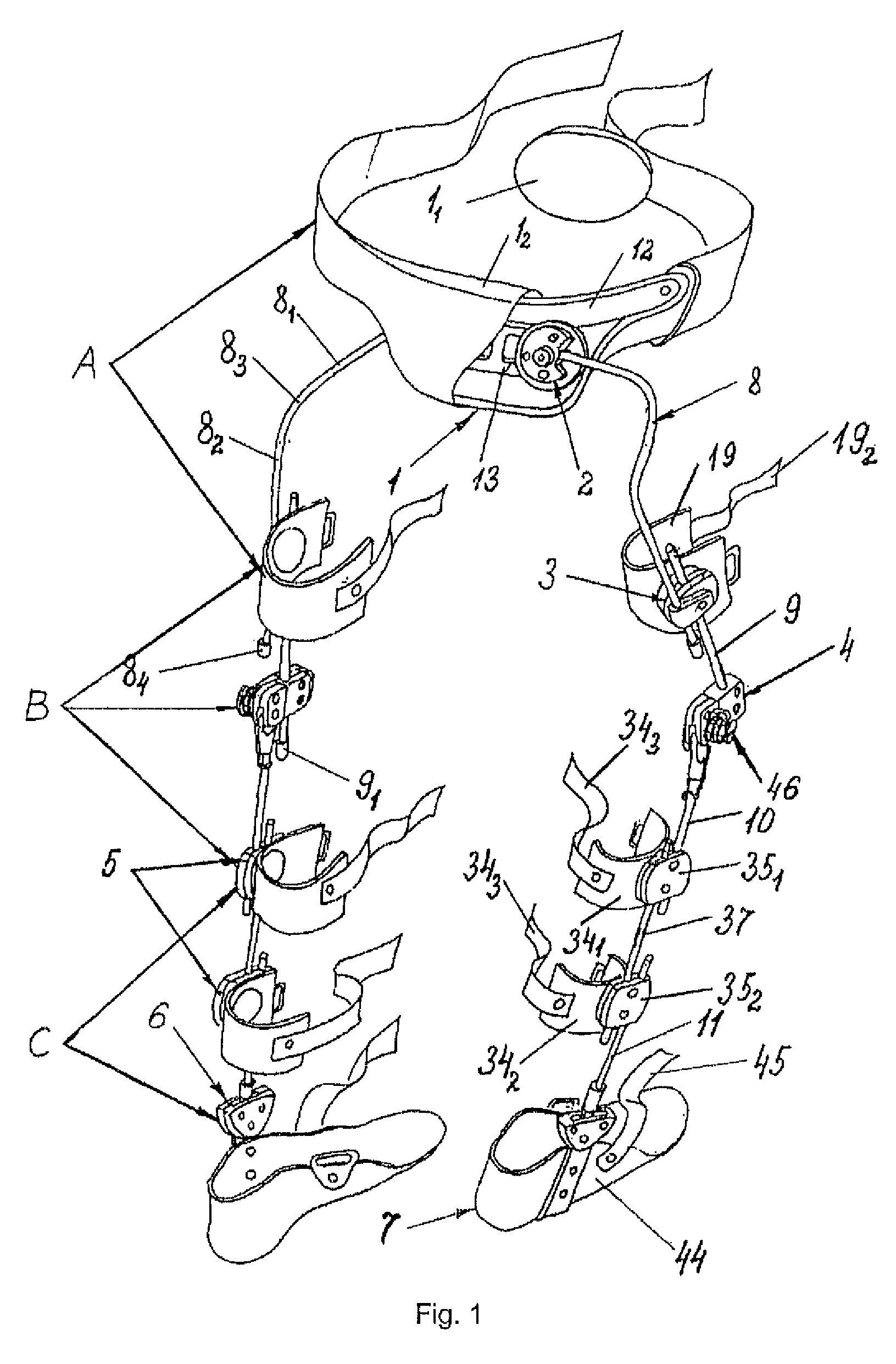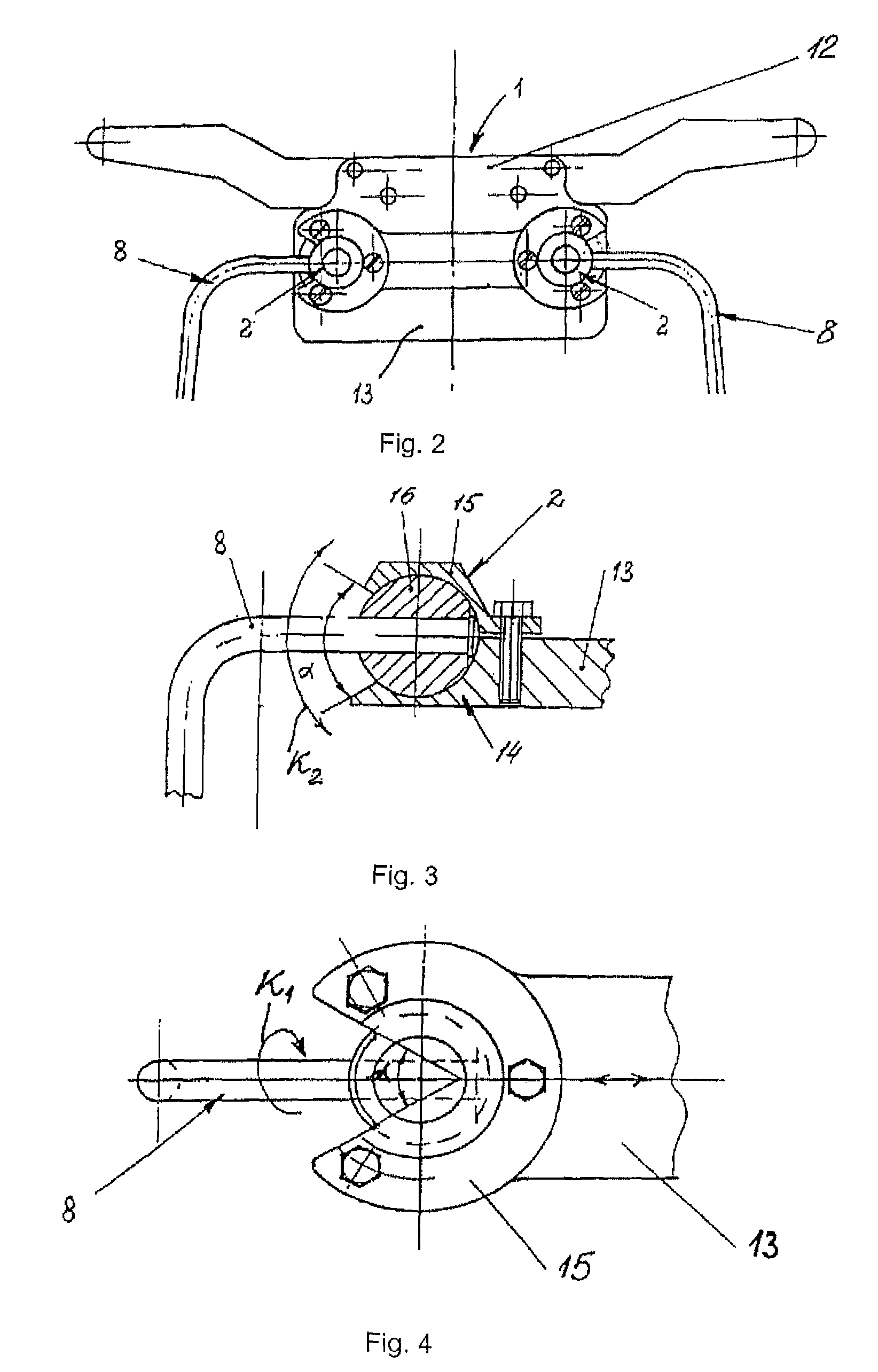Method for correcting pathological configurations of segments of the lower extremities and device for realizing same
a technology of pathological configuration and lower extremity, applied in the field of medicine, can solve the problems of partial loss of motor skills, hypotrophy of pelvic girdle and lower extremity muscles, and limited use of said method, and achieve the effect of correction only
- Summary
- Abstract
- Description
- Claims
- Application Information
AI Technical Summary
Benefits of technology
Problems solved by technology
Method used
Image
Examples
example 1
[0333]User N. R., age: 8.
[0334]Diagnosis: infantile cerebral palsy (thereafter ICP), spastic diplegia predominantly affecting the right extremities, severe form, adductor-prone positioning of the thighs, pathological flexion and valgus positioning of the tibias, more on the right, abductor-equine-planovalgus positioning of the feet.
[0335]On examination: the user does not stand or walk without assistance. Patient walks while supported on one arm or while leaning on two Canadian crutches in the position of triple bending with inner rotation of the thighs and leaning on front-inner regions of the feet. During walking, there is non-permanent crossing of lower extremities at the level of the lower third of the thigh. There is pronounced valgus positioning of the right tibia in the position “standing” and during locomotion; valgus positioning of the left tibia is less pronounced. In the position “standing” and during locomotion, there is notable pathological abduction of the feet, more so...
example 2
[0341]User K. K., age: 24.
[0342]Diagnosis: ICP, spastic diplegia of moderate severity predominantly affecting left extremities, secondary multi-dystrophic syndrome, adductor-prone positioning of the thighs, inner rotation of both lower extremities, valgus positioning of the left foot, pronounced equine-planovalgus positioning of the left foot.
[0343]On examination: the user walks without assistance yet with a pronounced rocking of the torso during walking, rotates the lower extremities inward with support on the entire right foot and front-inner region of the left foot. The thighs are adducted. The support phases during locomotion are not differentiated (there is no “rollover” from the heel part of the foot to the distal part of the foot during walking). In the standing position and during locomotion, moderate valgus positioning of the left tibia is evident. The right lower extremity is more supportive, the single-support period of the left lower extremity is shortened. There is nota...
example 3
[0349]User: A. A., age: 3.
[0350]Diagnosis: consequences of a closed craniocerebral injury, brain contusion, left-sided dissociative hemiparesis predominantly affecting the left lower extremity, abnormalities of posture in the frontal plane, flexion positioning of the left forearm, adductor-prone positioning of the left thigh, recurvation of the left tibia, adductor-equine-varus positioning of the left foot with adduction of the front region, anatomical shortening of the left lower extremity by 7 mm.
[0351]On examination: the user stands and walks without assistance. The walk is hemiparetic, non-elastic, with frontal rocking of the torso; during walking, leans on frontal-outer regions of the left foot, the phases of the left foot's support period are not differentiated. During walking, there is recurvation of the left tibia in the knee joint. Reciprocal movements of upper extremities are absent during walking. Active dorsiflexion of the left foot is absent.
[0352]The proposed exoskelet...
PUM
 Login to View More
Login to View More Abstract
Description
Claims
Application Information
 Login to View More
Login to View More - R&D
- Intellectual Property
- Life Sciences
- Materials
- Tech Scout
- Unparalleled Data Quality
- Higher Quality Content
- 60% Fewer Hallucinations
Browse by: Latest US Patents, China's latest patents, Technical Efficacy Thesaurus, Application Domain, Technology Topic, Popular Technical Reports.
© 2025 PatSnap. All rights reserved.Legal|Privacy policy|Modern Slavery Act Transparency Statement|Sitemap|About US| Contact US: help@patsnap.com



